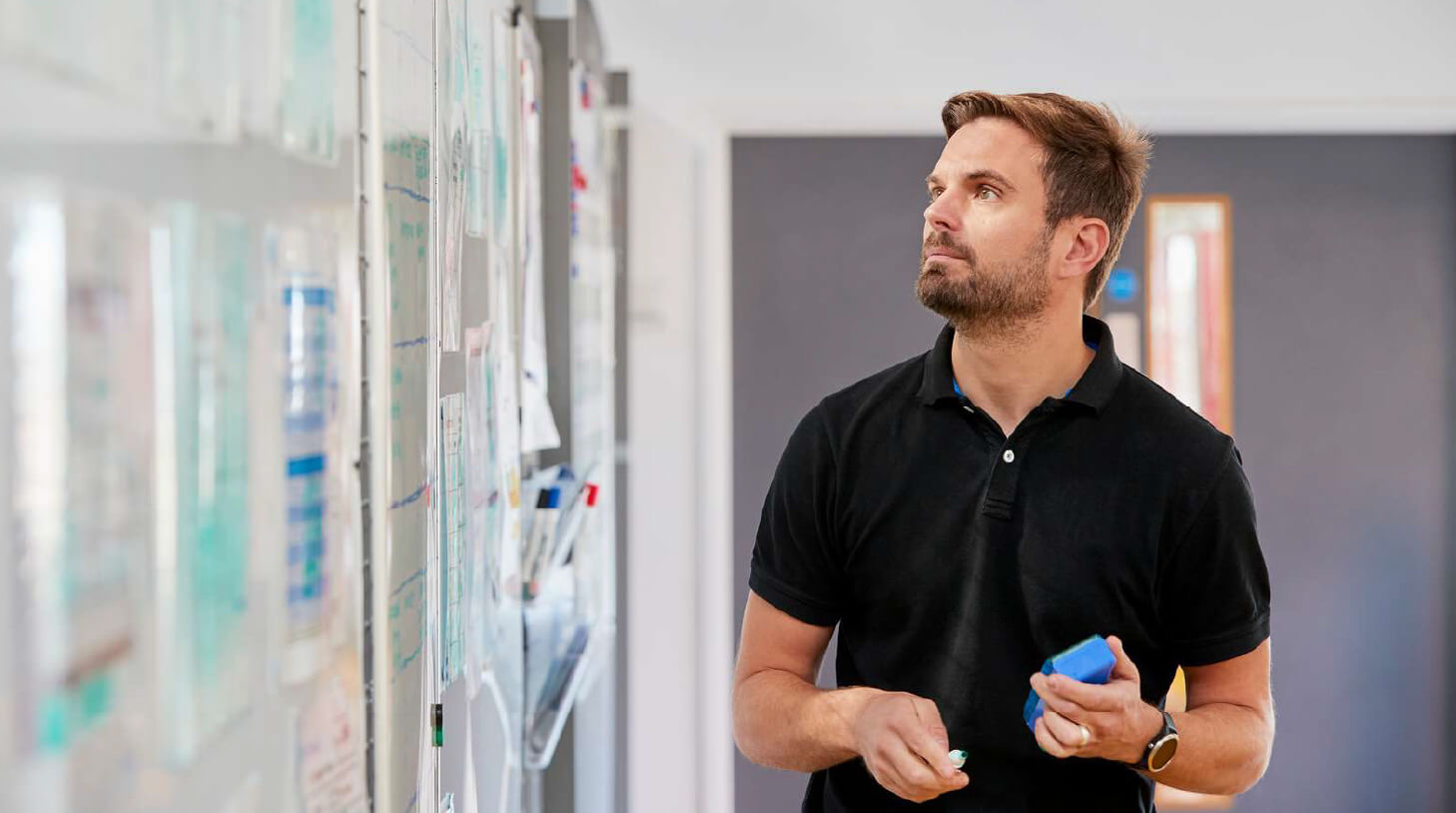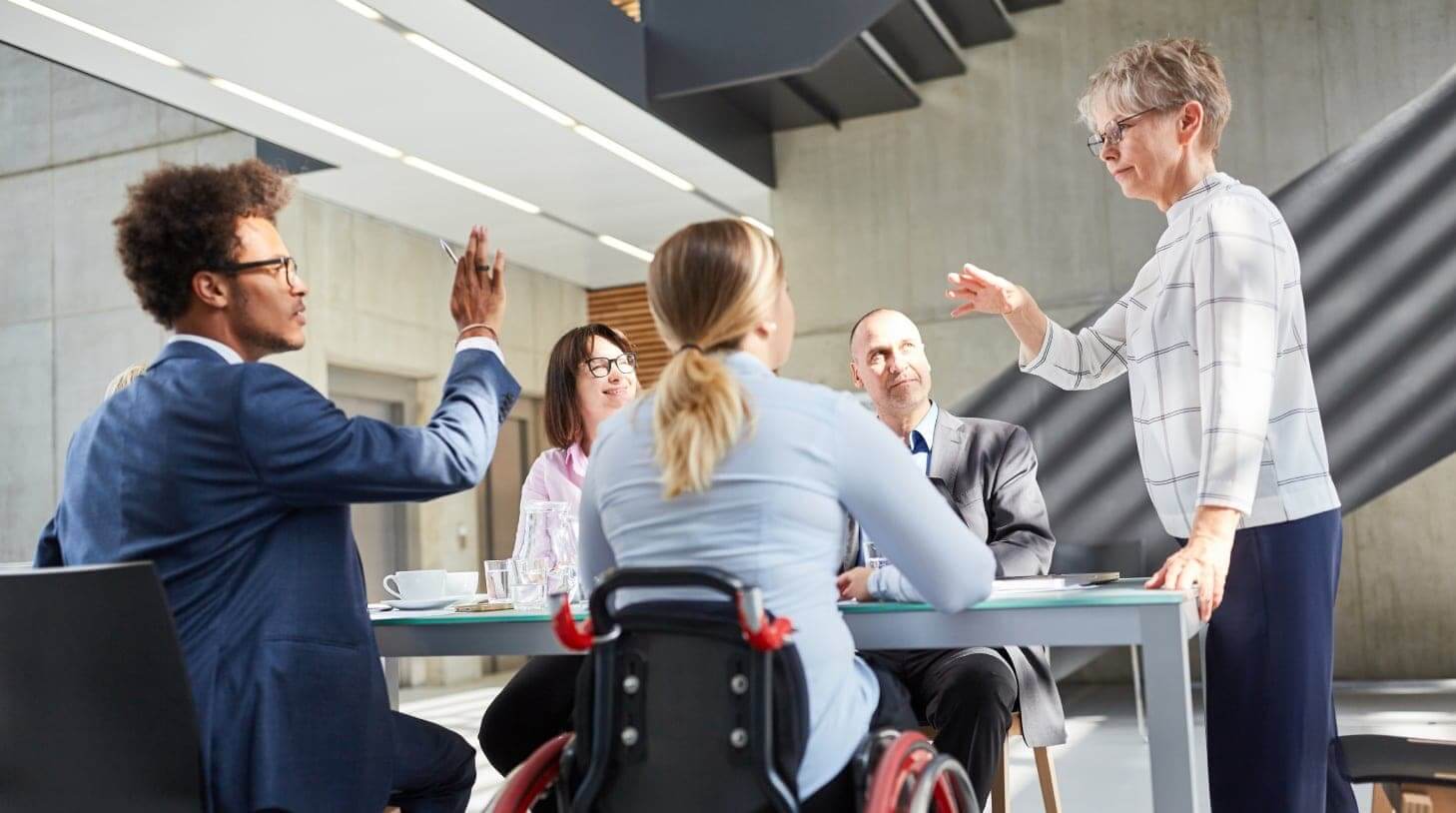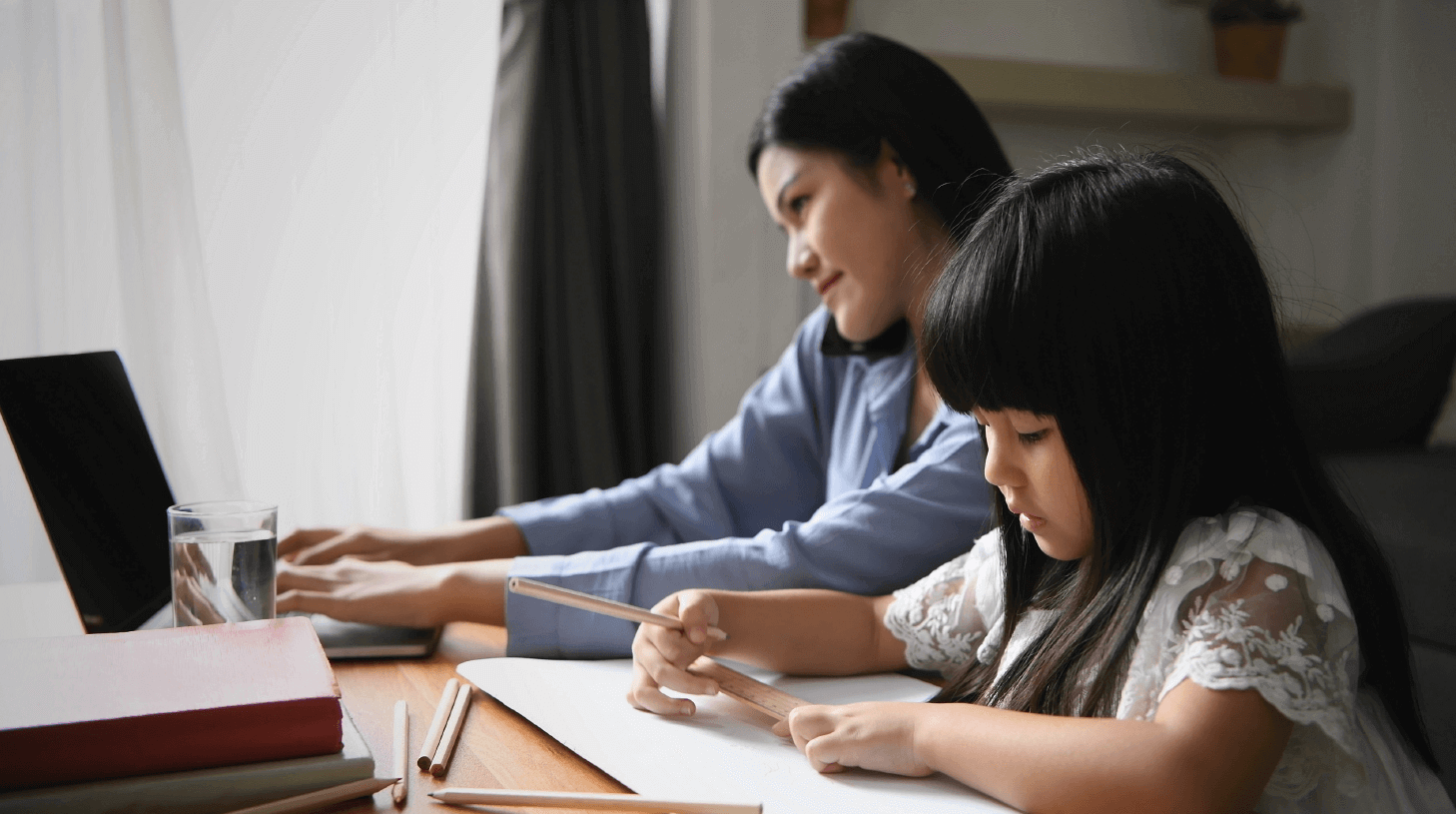The winds of change: return to office in the face of COVID-19
Dave Vinton is the Global Talent Pipeline Manager Engineering & EPC at Denmark-headquartered Ørsted, a multinational energy company and the largest offshore wind farm company in the world. Like many talent or HR managers at large corporations across the globe, Dave’s company operations – and his own work – has been impacted considerably by the spread of COVID-19.

NOTE: This article was originally published in our site in August 2020. But the takeaways are very relevant today as companies move to return to an office environment beyond the pandemic.
Now, with restrictions lifting or already lifted in many countries – including Denmark – there are questions on best practices for a return to office and a relatively normal standard of work. Since Denmark is ahead of the so-called flattened curve, we sat down with Dave to talk about his company’s approach to a reboarding strategy in the workplace.
These were the main learnings from our conversation:
1. Don’t disrupt the operations
To say the COVID-19 crisis has been disruptive to business is putting it mildly. Small businesses are hurting significantly according to a Business.com survey, and even larger companies are pushing back on or cancelling investments according to a PwC survey of CFOs in early May.
Ørsted focuses on energy, which can’t be scaled back or adapted to a remote workplace so easily as businesses in other industries. So the survival options available to others aren’t as available to Orsted. Dave thinks about this when considering myriad changes to work operations:
“We generate substantial amounts of electricity in the markets we serve and it’s actually making sure that we continue to generate electricity. So [this] is considered [essential] work. Those who are responsible for operating and maintaining offshore wind farms are still working,” David says. “We’re getting quite a bit of work to do, a lot to work to ensure social distancing, good hygiene and these kinds of things as well so those people can carry on working. We make safety our top priority, and that’s remained at the forefront of our minds.”
Also, he adds, not everyone is able to work from home for logistical reasons. Dave is aware of that and takes this into consideration when determining who works from home and who doesn’t in the return to office.
“[T]here are office workers like me who are working from home. [But] offshore wind technicians are still working offshore because their job needs to be done at the site.”
Ultimately, Dave’s keeping his eye on the prize – business continuity. In the energy industry, you have to keep those wheels turning no matter what changes are made in operations.
“Our business has been really clear in saying that the business continues. We don’t stop. We continue what we’re doing. So in many ways, our way of working has changed, but our work hasn’t changed.”
2. We’re learning as we go
The COVID-19 phenomenon and its economic impact has been called largely unprecedented – particularly the impact it’s had on how modern-day society operates. It’s still up in the air how we’ll return to office and some semblance of normalcy – if it even happens – and that’s because we have no experience to draw from.
As stated at ChiefLearningOfficer.com: “Reboarding is not ‘unpausing’ the TV because you shut it off during coronavirus. It’s not the same anymore; the TV show is new.”
Dave acknowledges this reality. We’re not returning to the way things were.
“Even when a country starts to ease out of lockdown, I think the workplace will continue to look different for a prolonged period. Like everyone else, we’re learning as we go.”
It’s about finding a new way to do things. And to make it more complicated, as the saying goes, we’re trying to change the tires while the car’s still moving. Digital transformation is only one part of the equation. There are other challenges and changes coming, according to Dave, who says his company’s looking at new ways of collaboration while managing to continue doing things in a productive way.
3. Health above all
A recent Qualtrics survey finds that two out of three people surveyed in the American workforce aren’t feeling comfortable about the idea of returning to office life, with their health and safety at the core of that concern. What’s more, if they absolutely must return to the office, the majority of those surveyed expect their company to take strict precautions to ensure the workplace is safe for employees – including strict guidelines around sanitation (deep cleanings, facemasks) and an updated sick leave policy.
That isn’t just on Dave’s radar – it’s a major focal point for him.
“I want to make sure that the most important thing is keeping our colleagues safe,” says Dave. “That’s our top priority rather than anything else.”
It’s not just about reducing the risk of infection through sanitizing the workplace and redesigning it to minimize the so-called risks of social contact. Mental wellbeing has risen in importance for many – with significant spikes in stress levels and calls to mental health hotlines being reported.
Above all, caring for your workforce’s wellbeing is not only a good gesture – it also positively impacts business productivity.
4. Introduce strict sanitation protocols at work
Like many other companies also consciously aware of the emphasis on employee health, Ørsted’s implementing new processes and protocols to minimize the risk of COVID-19 in the company’s workforce. Some of it is pretty straightforward stuff, as Dave explains:
“We have certain things where we expected to touch surfaces, things like coffee machines and door handles and photocopiers and that sort of thing. So we will say that if you touch one of those things, we’ll probably turn the coffee machines off, but if you touch a door handle wash your hands, use hand gel, something like that to sanitize your hands.”
Dave’s also thinking about getting rid of the open-office setup and introducing a different kind of desk-sharing system – especially since hot desking is being ushered out as a standard in workplaces, even by law in some jurisdictions.
In the office, social distancing will be the norm. Canteens (eating areas) and shared tables at lunch will no longer be in the workplace. Instead, David says, “you’re all given food in a box, which you can take back to your desk and eat it there rather than all being out in open spaces. When we return to canteens, this will be socially distanced so we can keep our employees safe”.
Physical movement will also be limited within the building – employees will be required to stay at their own floor, using only the bathrooms and other facilities on that floor. Meetings will more often be virtual using video tools such as Microsoft Teams, Zoom and Google Meet rather than in person, even if colleagues are physically in the same area together.
There’s also going to be a reduction in workplace density, by switching from office-first to remote-first – for the time being, at least.
“The majority of our colleagues will continue to work from home for the foreseeable future. And so we have done it in Denmark on an opt-in basis.”
But, Dave notes, not all workers are able to simply move to a work-from-home model:
“Some of our colleagues have needed to return to the office earlier. Some of the reasons have been that we have people working on critical projects that require certain IT resources and traders who manage our market exposure, so they need particular equipment.”
5. Stagger your WFHs and commutes
When you’re limited to 25% capacity in the workplace according to Dave, that means just one in four of your talent can be physically present at work at any given time. Which brings forward another question: who do you bring back to the workplace first?
For Dave, the priority are those who need to be onsite to work in any capacity. Next are the ones whose options are limited on the home front.
“For some people, their home Internet is not very good, or the work setting isn’t great. So they have to come back early.”
Those with small children are also being considered. Nurseries and daycares are now reopened in Denmark, making return to office easier for those working parents.
But the challenges aren’t restricted to office density or even compliance for that matter. There are other logistics to think about as well for Ørsted in keeping employee health at top of mind.
Avoid the crush
When employees return to office, another reality sinks in: the ‘rush-hour bottleneck’. Dave considers this a major factor in logistics. In Denmark, he says cycling is a popular commuting option – but if everyone, including him, was to start cycling to work, that increased density along bike routes would have to be considered.
So, he’s looking at a couple of solutions to get around that potential glut of commuting cyclists:
“Rather than everyone trying to come to work at nine, some people will come early, some people will come at normal times, some will come later.”
In London, which doesn’t even register in the top 20 most bike-friendly cities in the world according to the aptly titled Copenhagenize Index for 2019 (spoiler: Copenhagen ranks #1), the London Underground is usually the travel option. Dave notes that packing into those trains doesn’t make a lot of sense now especially given London’s huge population, so you have to give your workers some control over making the right decisions in reducing their potential exposure to COVID-19 on returning to the office:
“We would have to find a way in which physical distancing can continue for those who travel by public transportation… We talk about whether they want to go back to the office. Back to work is opt-in.”
And this means HR should inform colleagues to set expectations for being present at work with their managers, and that messaging must come from the top.
“We have regular communications from our executive committee and from our managers and our teams. And there’s already clear communication in the business about [that].”
Dave notes that a number of his senior leadership have already returned to the office, reminding us of the importance of leadership setting an example. “The reason why we want to get some senior leaders back in the office is to send the signal that we are slowly returning to normal.”
Keep things flexible
Flexibility around hours and working patterns is especially important in these times, says Dave. It’s normal for people to work from home one or two days a week in the UK, he adds, whereas in Denmark, it required more cultural adaptation:
“In Denmark it was considered quite unusual [previously], whereas now we see that people can be productive when working from home as well.”
Dave is quick to remind us that flexibility isn’t just about opting to work from home or come to the office – it’s also about working hours, empowering employees to set their own hours and decide what works best for themselves.
6. Tech can solve many issues
Business travel was an Ørsted staple for the longest time – both for Dave himself and for his colleagues. Now, of course, travel has been scaled back significantly – and this has led to a company-wide rethink of priorities:
“I think we are re-evaluating how much business travel is really necessary, and actually how much communication we can do virtually via video,” David explains. “That’s one of the things that we’re already doing; how can we find a way that we don’t always travel face to face and we do more by video, more digitally? We also want to be a leader here based on our green ambitions.”
Hiring and onboarding
Ørsted is a multinational company, with some 6,500 employees spread across eight offices in six countries, so it makes sense that their hiring and onboarding needs to be a multinational effort as well. That pushes the need for digitization of internal operations to a higher platform – including onboarding and introductory trainings, says Dave.
Hiring hasn’t stopped, or even slowed down for that matter, which heightens the urgency to digitize the whole recruitment process to maintain its efficiency:
“That is due to the nature of the industry we’re working,” says Dave, ”and because our company shouldn’t have any changes to its financial performance and shift as a result of COVID-19.”
7. Tech also empowers action
COVID-19 is a serious matter, and it has unearthed many of the issues in the way we operate as a broader society, be it in the workplace or elsewhere. It’s called for changes in our work processes by elevating remote work to be as equally effective as in-office work.
Going deeper, it’s also shed light on the limitations and faults in the way we did things before. The Black Lives Matter phenomenon is not a new one – but it’s been drastically amplified alongside the need for a healthier society. It’s resulted in greater emphasis on diversity in hiring and inclusion in the workplace, and companies worldwide are actively taking steps to make that happen.
The digitization of the recruitment process, interestingly, creates an opportunity to pursue diversity in greater depth, Dave suggests. Hiring and onboarding virtually means you can go broader in your candidate outreach. For instance, Dave’s hiring pool is no longer restricted to Denmark and he’s now able to work with international colleagues as well:
“We have colleagues joining us [from] Taiwan and Japan rather than going to Denmark and then fly back. We want to actually help them find a way to make it really inclusive for everybody.”
Side note: that opportunity to build remote connections was also identified by SmartBug Media in their own efforts to unify teams remotely. Read more about it.
8. Be mindful of the big picture
A more inclusive work culture is just one of the paradigm shifts that could be happening as part of the COVID-19 crisis. Dave is attuned to the fact that COVID-19 is a catalyst for even deeper shifts to happen:
“Our workplace like many other workplaces, is set up pre-COVID-19. So if we needed to talk about long-term changing of working patterns, then the way the workplace looks would be quite different, I think. But, at the moment, we haven’t got to that level of thinking yet.” Dave adds that this is because we’re still in survival mode and implementing stopgap solutions.
So when do we start that ‘rethinking’? Dave suggests giving it a couple of months before making those long-term modifications “For example, we’ve said I counted six desks. One is available for work. Whereas if we said long term, these desks need to be at least two meters apart. We’d have to reconfigure the workplace,” he says.
Great, but those are the easy details. The bigger questions remain: how do we adapt to this new way of working to reflect this new reality, while making sure we’re still building connections with each other?
“That’s one of the biggest learnings; how can we make things less impersonal? And that’s been our biggest challenge, I think, starting from my side. It says how we think about what’s right.”
So what it comes down to in the end is how to adapt to that new world of work. Dave says he’s concentrating on this question: “How do we then support each other in this different way of working?“
That’s the big picture there. We humans are social animals, and physical distancing makes it more difficult for us to work together. Or does it? We have the technology and versatility to continue working together – Dave Vinton and Ørsted have made that clear. With the right kind of thinking and planning in place, we may just get through this yet.
End note: This article is the result of an in-depth interview carried out by Christina Pavlou.




